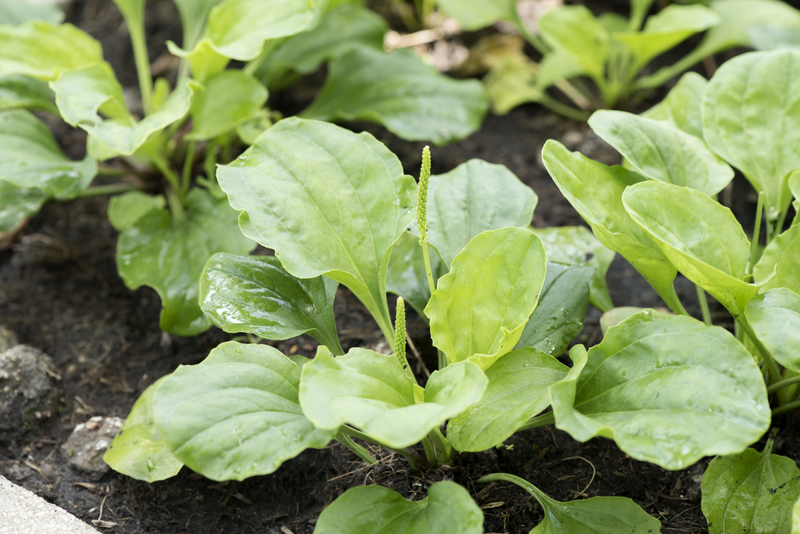Master Hedge Trimming: Innovative Shapes and Techniques
Posted on 17/08/2025
Master Hedge Trimming: Innovative Shapes and Techniques
Are you looking to elevate the look of your garden or landscape with beautifully sculpted hedges? Mastering hedge trimming is an art--and with emerging techniques and creative shapes, it can truly transform your outdoor space! This comprehensive guide will walk you through everything you need to know about hedge trimming, from the basics to the most innovative styles and practices.

Why is Hedge Trimming Important?
Hedge trimming serves more than just an aesthetic purpose. Proper trimming encourages healthy growth, enhances the plant's vitality, and prevents the spread of disease. A well-maintained hedge can:
- Enhance curb appeal - Neat, shaped hedges frame pathways and highlight property boundaries.
- Create privacy - Dense, healthy hedges offer a natural screen from neighbors and roadways.
- Support wildlife - Flowering and fruit-bearing hedges attract birds and pollinators.
- Improve air quality - Lush greenery absorbs pollutants and reduces noise.
Getting Started: Choosing the Right Tools for Hedge Trimming
Investing in quality hedge trimming tools helps you achieve professional results. Below are essential tools for both basic and advanced creative hedge shaping:
- Hedge shears - Manual shears for precision and control on small to medium hedges.
- Electric or cordless trimmers - Great for shaping large and dense hedges efficiently.
- Loppers and pruning saws - Useful for removing thicker branches and rejuvenating overgrown hedges.
- String lines and stakes - Ensure straight edges for geometric shapes.
- Gloves, eye, and ear protection - Stay safe from debris and loud equipment.
Maintenance Tips for Hedge Trimming Tools
- Sharpen blades regularly for clean cuts and reduced plant stress.
- Clean and disinfect tools after each use to prevent disease spread.
- Lubricate moving parts to keep trimmers functioning smoothly.
Mastering Hedge Trimming Techniques
Effective hedge trimming requires both proper technique and timing. Here are key practices to master hedge shaping:
Understanding Hedge Growth Patterns
Recognize the difference between formal and informal hedges:
- Formal hedges: Pruned into precise, geometric shapes. Require frequent maintenance.
- Informal hedges: Naturally shaped, often flowering, and need lighter, less frequent trimming.
Tip: Always trim slightly wider at the base than at the top to allow sunlight to reach all parts, encouraging even growth.
The Best Times for Hedge Trimming
- Evergreen hedges: Light trim in late spring or early summer; heavy pruning in late winter.
- Deciduous hedges: Main pruning in late winter or early spring before new growth appears.
- Flowering hedges: Prune after blooming to avoid cutting off future flower buds.
Never trim on hot, sunny days, as exposed cut foliage can brown and stress plants. Opt for cloudy days or early morning/evening for best results.
Creative Hedge Shaping: Innovative Styles to Try
If you dream of transforming your garden into a living art gallery, now is the time to explore innovative hedge shapes. Below are design ideas and hedge topiary techniques to inspire you:
1. Classic Geometric Shapes
- Spheres and Domes: Easy to maintain and add softness to rigid structures. Start by trimming the sides, then curve the top to achieve a rounded look.
- Cubes and Rectangles: Perfect for formal gardens. Use string guides and regularly step back to ensure straight lines.
- Pyramids and Cones: Create visual interest and lead the eye upward. Gradually taper the sides towards the top.
2. Whimsical and Artistic Topiary
- Animal figures (birds, rabbits, spirals): Sculpting whimsical shapes takes patience. Use wire frames as guides and trim regularly to maintain definition.
- Spiral topiary: Begin with a young, upright plant. As it grows, wrap a string or masking tape in a spiral upward, trimming along the marked line to sculpt the winding shape.
- Letters and numbers: Ideal for personalized landscapes, events, or business gardens.
Pro Tip: Boxwood, yew, and privet are among the best species for intricate topiary due to their dense foliage and hardy nature.
3. Living Fences and Arches
- Hedge arches: Frame passageways and welcome guests with a green archway. Start by training two adjacent hedges upward, securing shoots over an arch-shaped frame until the foliage fills in completely.
- Green tunnels: For larger gardens, create enchanting tunnels with tall hedges pruned to curve overhead.
- Layered hedges: Plant different varieties or heights in staggered lines for a multi-dimensional look.
4. Creative Carving and Sculpting
For advanced hedge art, try:
- Wave patterns
- Cloud pruning (Niwaki) for a Japanese aesthetic
- Sculpted faces or abstract forms
These techniques require vision, careful planning, and frequent touch-ups but create unforgettable focal points in any landscape.
Sustainable Hedge Trimming: Eco-Friendly Practices
As you master hedge trimming, consider sustainability:
- Use electric or battery-powered trimmers to reduce emissions and noise pollution.
- Compost trimmings or use as mulch to return nutrients to the soil.
- Choose native plant species for your region, supporting local wildlife and reducing water needs.
- Leave sections "wild" to encourage biodiversity--small gaps or undisturbed areas allow shelter for beneficial insects and birds.
Common Hedge Trimming Mistakes and How to Avoid Them
- Over-pruning: Removing too much foliage shocks plants. Trim lightly and regularly instead of heavily all at once.
- Ignoring plant shape: Cutting a hedge into unnatural shapes is unsustainable. Work with the plant's growth pattern.
- Trimming at the wrong time: Out-of-season trimming can reduce flowering and make plants vulnerable to weather extremes.
- Dull blades: Dull tools rip leaves, leading to unsightly brown edges and increased disease risk. Keep blades sharp!
Choosing the Best Plants for Innovative Hedge Shapes
Not every shrub is suitable for creative topiary or precise shapes. Here are popular choices for master hedge shaping:
- Boxwood (Buxus): The classic topiary plant--small leaves, dense growth, easy to prune.
- Yew (Taxus): Robust and long-lived, tolerant of hard pruning, ideal for geometric and ornate shapes.
- Privet (Ligustrum): Fast-growing, perfect for living barriers and creative forms.
- Holly (Ilex): Provides color with its evergreen leaves and red berries.
- Photinia: Offers vivid red new growth alongside standard greenery.
- Japanese holly (Ilex crenata): Dense and small-leaved, perfect for precise topiary.
Considerations for Species Selection
- Growth rate: Fast growers need more frequent trimming, but fill out shapes quickly.
- Leaf size: Small-leaved varieties allow for more detail in shaping.
- Climate tolerance: Always choose species well-suited to your local weather.
Step-by-Step Guide: How to Sculpt a Spiral Topiary
- Start with a healthy, upright plant (such as boxwood or yew).
- Insert a cane or stake vertically to use as a guide.
- Wrap a string or tape in a spiral around the plant from base to tip.
- Use shears to lightly trim along the spiral line, removing side shoots above and below the marked path.
- Continue refining over the growing season, shaping edges and hollowing the spiral path.
- Maintain the shape by trimming every few weeks during the main growing season.
Be patient! Impressive spiral topiaries develop over several years of consistent careful pruning.
Expert Tips for Caring for Newly Trimmed Hedges
After shaping your hedges, promote healthy recovery:
- Water deeply--especially if it hasn't rained--to reduce shock.
- Feed with a balanced fertilizer to encourage new growth.
- Mulch around the base to conserve moisture and keep roots cool.
- Monitor for pests or disease: Fresh cuts can attract sap-sucking insects--treat early if needed.

FAQ: Master Hedge Trimming and Creative Shapes
How often should hedges be trimmed?
Most hedges benefit from two to three trimmings per year, but some fast-growing species may require monthly shaping during summer.
Can any hedge be trained into a formal shape?
Not all hedges are suitable for intricate topiary. Choose dense, small-leaved species such as boxwood, yew, or privet for best results. Some native plants with loose growth habits are better left in an informal shape.
Is it better to use manual shears or electric trimmers?
For detailed work and smaller hedges, manual shears give the most control. For large, straight runs or thick, mature hedges, electric or battery-powered trimmers save time and effort.
What's the secret to even, symmetrical shapes?
Use guides such as strings, stakes, or wire frames, and continually step back to check your work from a distance. Trim both sides equally and resist the urge to over-correct.
Conclusion: Transform Your Space with Innovative Hedge Trimming
Mastering hedge trimming unlocks a new dimension in garden artistry. Whether you favor classic geometric structures, whimsical animal forms, or bold sculptural statements, the right techniques and creative vision can revolutionize your landscape design. Remember to treat your plants with care, use the right tools, experiment with new shapes, and trim regularly for healthy, beautiful hedges year round. With patience and artistic flair, your garden will become a neighborhood showpiece--lush, inviting, and uniquely yours.
Ready to get started? Grab your trimmers and let your imagination shape the green canvas of your outdoor space. Happy hedge trimming!

